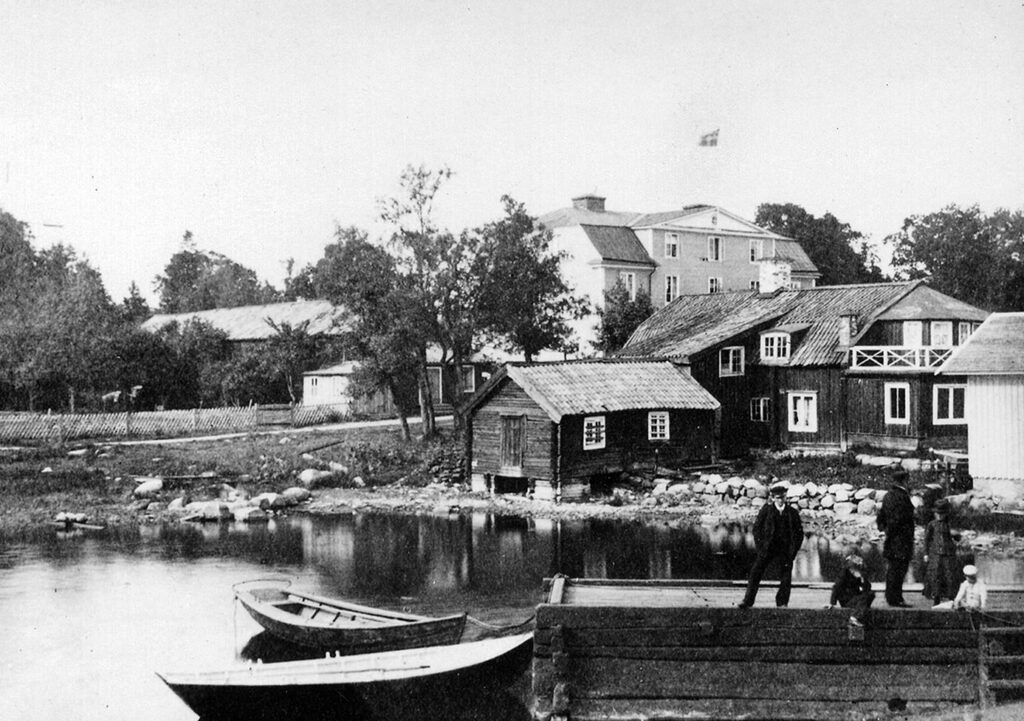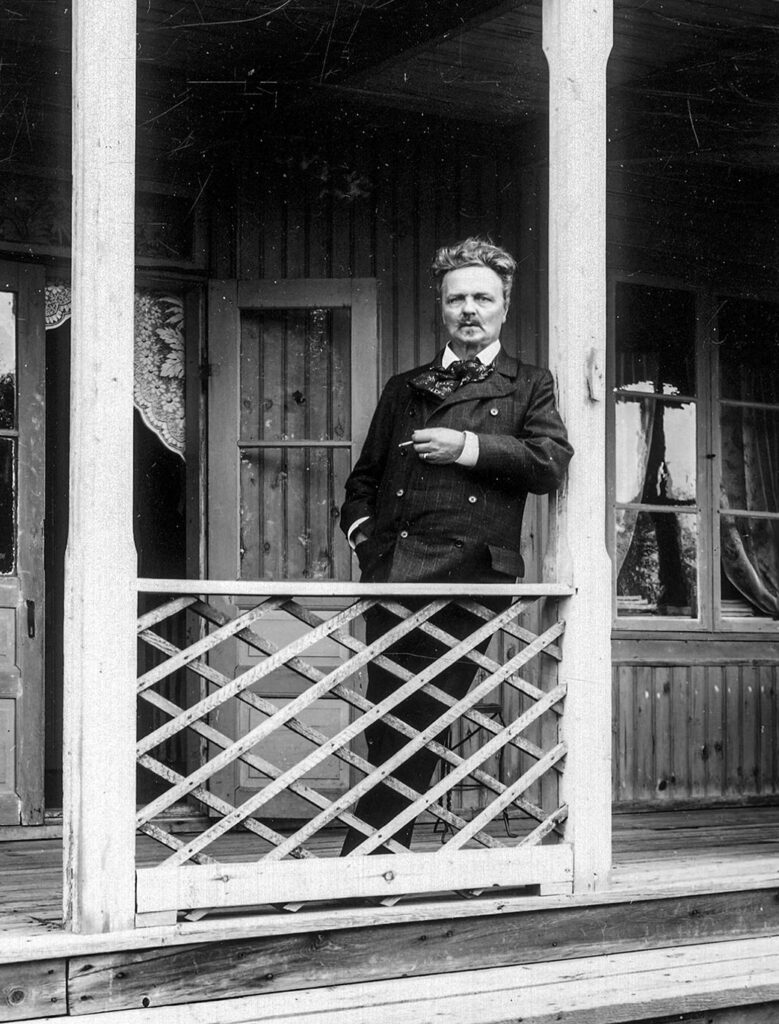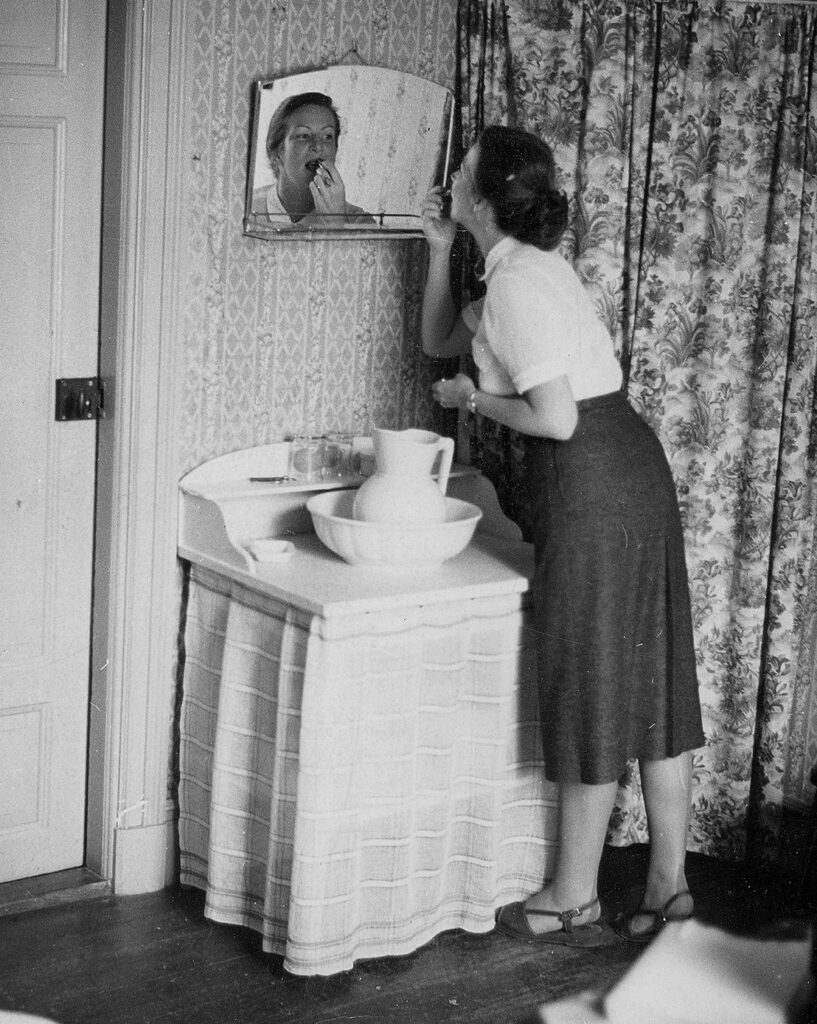FURUSUNDS
HISTORY
From past to present.
HISTORY OF FURUSUND
From a vital sea passage to a summer paradise.
Furusund is a small island located in the Stockholm archipelago in Sweden, which has a rich history dating back to the 13th century. The island has been an important shipping route for centuries, and its name has been used for the canal connecting the Baltic Sea to the Gulf of Bothnia. In the late 18th century, King Gustav III established a large distillery on the island to raise funds for the war against Russia, and in 1811 a customs station was built to control the passage of ships. The customs house was later converted into a hostel, which is still in operation today. During the 19th century, Furusund became a popular destination for vacationers, especially for its spa facilities. The island was also a favorite summer spot for famous people such as August Strindberg, Carl Larsson and Anders Zorn.
Lunch break on the logger sailing ship Venus. From left Karl Lindholm, the dog Roy and Hjalmar Öhman, in 1905 outside Furusund.
Introduction
Furusund is the archipelago island that gives its name to the fairway that has been used for centuries by seafarers heading east, and is still used today by Finnish ferries and the largest cruise ships on their journeys to Åland, Helsinki, Tallinn and St. Petersburg. The island is located where the fairway passes through a narrow strait, making Furusund visible for miles from both north and south.

Bird hunting at Furusund, with satisfied gentlemen, around 1913.
Photo: Otto Johansson.
The peace with Russia was short-lived, however, and after Sweden's defeat and loss of Finland in 1809, the need for a functioning customs chamber along the waterway arose. In 1811, a customs station with a jail was built at Furusund. The house they built is the very building that we now call Furusund's inn. At this time, 15 customs officers and their families, an inspector, 12 caretakers and 2 rowers lived and worked in the customs house.
During the 19th century, Furusund became known both in Sweden and abroad as a bathing and health resort. This is largely thanks to the court jeweler Christian Hammer (1818-1905) who bought the island in 1882 and transformed it into a summer paradise, which, with its bathhouses, picturesque villas and beautiful walking paths, attracted society and royalty as well as artists and writers. The latter include August Strindberg, Anders Zorn and Carl Larsson.


View from Furusund's mill, towards the guest harbor around 1908.
Photo: Otto Johansson.
August Strindberg at Furusund
August Strindberg came to Furusund in the summer of 1899, attracted by his sister and brother-in-law, who had spent many summers on the island. At Furusund, Strindberg also spent time with Harriet Bosse in the villa Isola Bella. Here on the island, the author found the peace he longed for and the time on Furusund inspired Strindberg in many ways. Often the island and its people became models for characters in his works, such as The Gothic Rooms and The Dance of Death. However, Furusund became most famous in Strindberg's poem Fagervik and Skamsund (1902), where Furusund is Fagervik and Köpmanholm is Skamsund.
The difference between the two towns, on either side of the strait, could not have been greater at the turn of the last century, so people of the time could easily understand what Strindberg meant. Furusund was dominated by the restaurant and several hotels, the beautiful villas and sailing boats of the bathing society, walking paths and bathing places. There was access to all kinds of recreational facilities, from tennis courts and bowling alleys to Zander's exercise machines. The parties followed each other and so did the theater performances.

August Strindberg on the veranda of the Furusund Inn in 1902.
Sleeping Beauty and a new owner
Köpmanholm, on the other hand, had long been clear-cut and scorched. There were hardly any villas with Italian names or hot baths. Instead, the island was characterized by pilots, reading and temperance.
However, the star of Furusund had slowly begun to fade. Until 1914 and the First World War, the island had been busy, especially in the summer. Foreign tourists, especially Germans and Russians, were frequent visitors. A German prospectus from 1914 shows that Furusund at that time had very good connections with the outside world. Steamboats such as Svithiod, Lena, Odin and von Döbeln could reach Furusund from all corners of the Baltic Sea (Lübeck, Stettin, Riga and St. Petersburg).
After the war, Furusund falls into a deep Sleeping Beauty sleep. When the war ended, a valiant attempt was made to wake her up and restore the island to its former glory. In 1921, however, Furusund was sold to the landowner Samuelsson. He was hardly interested in refurbishing the island and running it as a vacation paradise. Samuelsson, who had a keen eye for forestry and logging, had made a fortune by acquiring farms and associated woodlands.

Photographer Otto Johansson sailing the boat Venus around 1915.
Customs is forced to leave the island
It was with Samuelsson that Customs had to abandon the building it had occupied for over a century. Customs had an old contract on the customs house since 1812, a contract that had been renewed several times before. Since Customs had forgotten to renew the contract in time, Samuelsson saw his chance and refused to renew it and ordered Customs to demolish the house and remove the stones that formed the foundation. Since the house had become too large for Customs' needs, they chose to give up the old customs house and instead moved closer to the water to a much smaller house. Today we are very grateful that the old customs house was never demolished, as the house is now 200 years old.
The decay of the island continued under Samuelsson and Furusund now became known more as a smuggler's haunt than a seaside resort. By the time Samuelsson sold Furusund in 1938, the island was in deepest decay. As before, under the auspices of the new owner of Furusund, Albin Andersson, a thorough attempt was made to refurbish and restore the island, the large restaurant, the hotels, the bathing huts and the beaches.
The Second World War
However, another world war would put an end to these plans. With the start of the Second World War in 1939, fortifications were again established at Furusund and Blidö. A small military group was now located in Köpmanholm, but was later allowed to use the old customs house at Furusund in exchange for carrying out some maintenance work, making improvements and drilling a well.
In 1944, Furusund became a quarantine for war refugees, mainly Estonians, who had arrived on the island by boat. Resources were now focused on taking care of the new arrivals in the best possible way. For understandable reasons, the refurbishment of the island ceased and by the end of the refugee quarantine, Furusund was once again worn and neglected. It didn't get any better when the large restaurant burned down in 1950. However, it was the start of the inn business in the old customs house, which at that time was called "Hotel Gamla Tullhuset" and which later became Furusund's inn.

